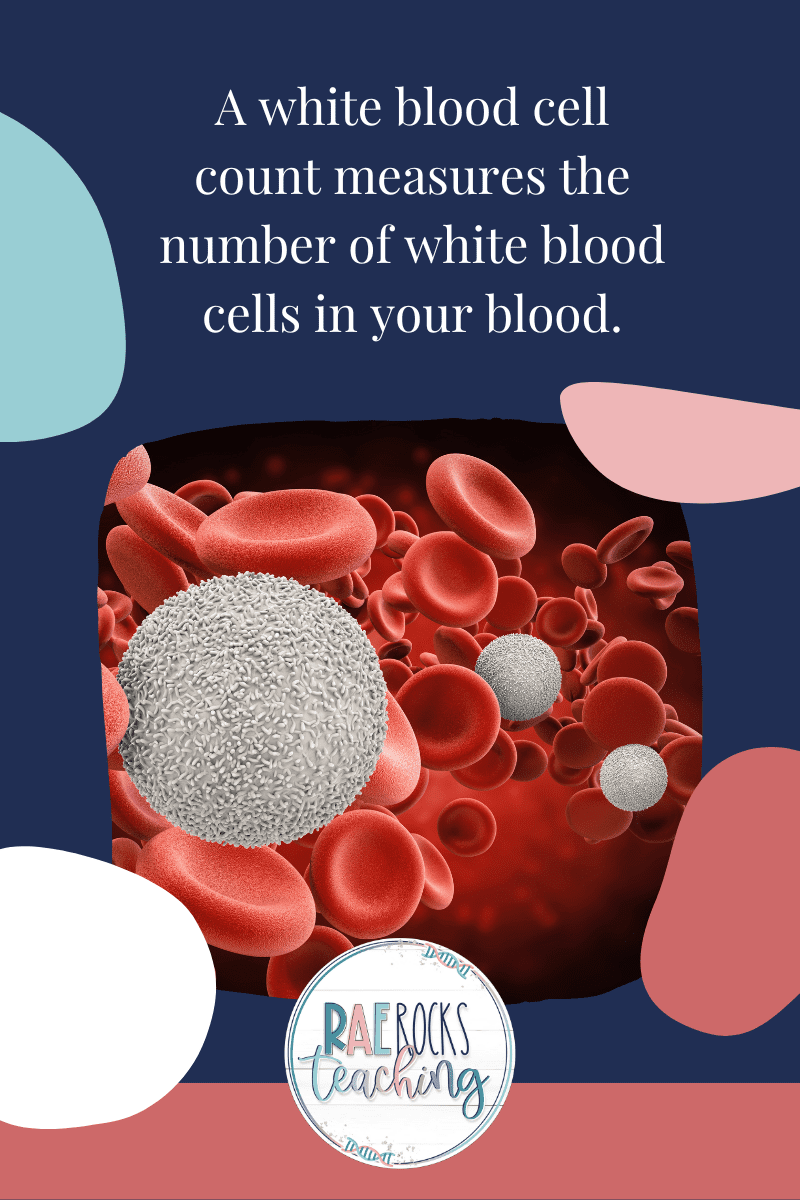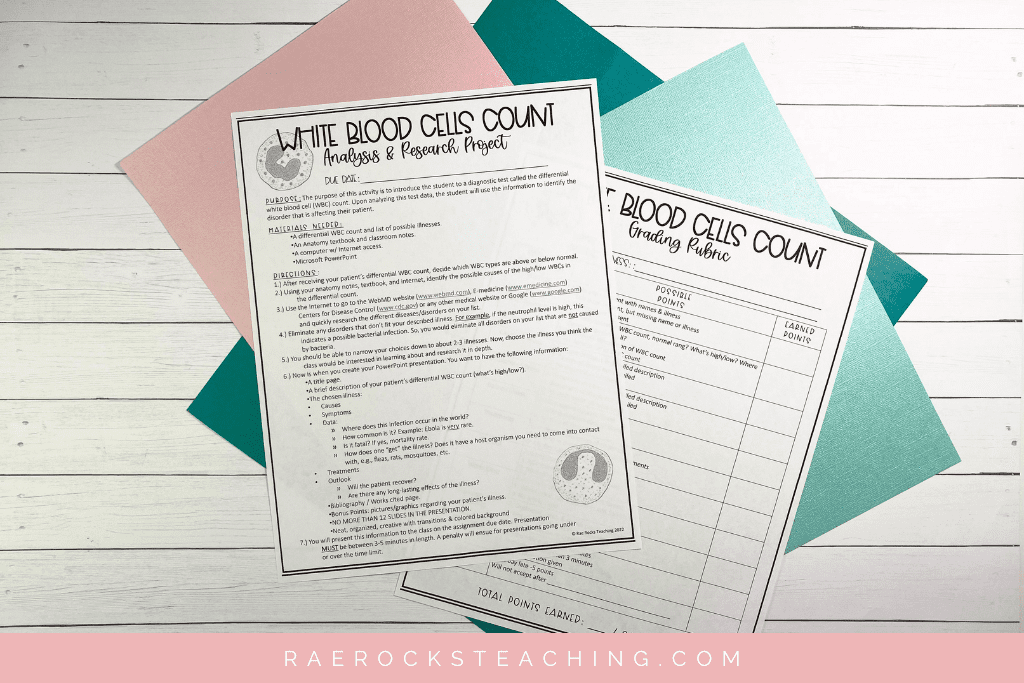If you’re looking for something new to do with your Anatomy students that involve the blood unit, try this white blood cell count with differential levels project.
Looking for more ways to engage your anatomy students? Then check out The Ultimate Guide to Engaging Students to Learn Anatomy | 7 Secrets to Implement Today
What Does White Blood Cell Count Mean
White blood cells are part of your immune system which help your body fight off infections or other diseases. So when you get ill, your body will make more white blood cells to fight off the infection. A white blood cell count measures the number of white blood cells in your blood. There are 5 types of white blood cells in our bodies. A white blood cell differential test measures the percentage of each type of white blood cell that we have in our bloodstream. Based on the levels, it can reveal if there are any abnormal or immature cells.

-
Save
The information found in a differential white blood cell test is helpful in diagnosing specific types of illnesses that may have an effect on our immune system. Neutrophils for example move into an area of damaged or infected tissue where they will destroy bacteria. Lymphocytes are things such as B cells, T cells, and natural killer cells that help to remove non-self antigens and cancer cells. Monocytes are often associated with chronic infections rather than acute infections and are also involved in tissue repair. Eosinophils respond to infections that are caused by parasites and also play a role in allergic reactions. Lastly, basophils are linked to allergic reactions.
White Blood Cell Count Chart
In order to help my students understand how white blood cells function in the body, I have them do a white blood cell count analysis and research project. The purpose of this activity is to introduce students to the diagnostic test called the differential white blood cell count. Upon analyzing this data the students will use the information to identify the disorder that is affecting their patient.

-
Save
Students will receive their patients’ differential white blood cell counts and they must decide which white blood cell types are either above or below the normal levels which are listed in the table. They will then use their notes, textbook, internet, etc to identify the possible causes of the high or low white blood cell count. The project includes several possible diseases or disorders that could be causing the fluctuation of white blood cell count outside of their normal limits. Once students have decided which illness it is, they will then do more in-depth research on it. Students will create a PowerPoint presentation that they will present to the class with a description of their differential white blood cell count, the illness that it is along with the causes, symptoms, data, and treatments.

-
Save
White Blood Cell Count Normal Levels
This project will help to solidify students’ understanding of white blood cells and their role in the body. In order for students to understand the diseases and disorders that are linked to these specific white blood cells, they must have a basic understanding of the normal levels of white blood cells in the body.

-
Save
The project includes 12 different patients’ white blood cell with differential counts in order to have more variety. Depending on the size of your class, you could break students up into groups of 2-3 and work collaboratively. I give students some time to work on these in class. But if they need additional time, they will have to complete it on their own outside of class. Once it is their turn to present, then it needs to be 100% completed in order to not lose points for it being incomplete or late.
Don’t forget to grab your FREE COPY of The Ultimate Guide to Engage Students To Learn Anatomy | 7 Secrets To Implement Today

-
Save
I love sharing helpful content with y’all and would love to connect on IG or Facebook. I’m on TikTok too! Follow me and send me a DM with what you need more of because I’m here to help! If you are looking for even more inspiration, find me on Pinterest!
Wanna read more?
5 Anatomy Dissection Procedures to Help Make Them Run Smoothly
Why You Should Stop Using Worksheets for Anatomy and Physiology
Share via:









One Response